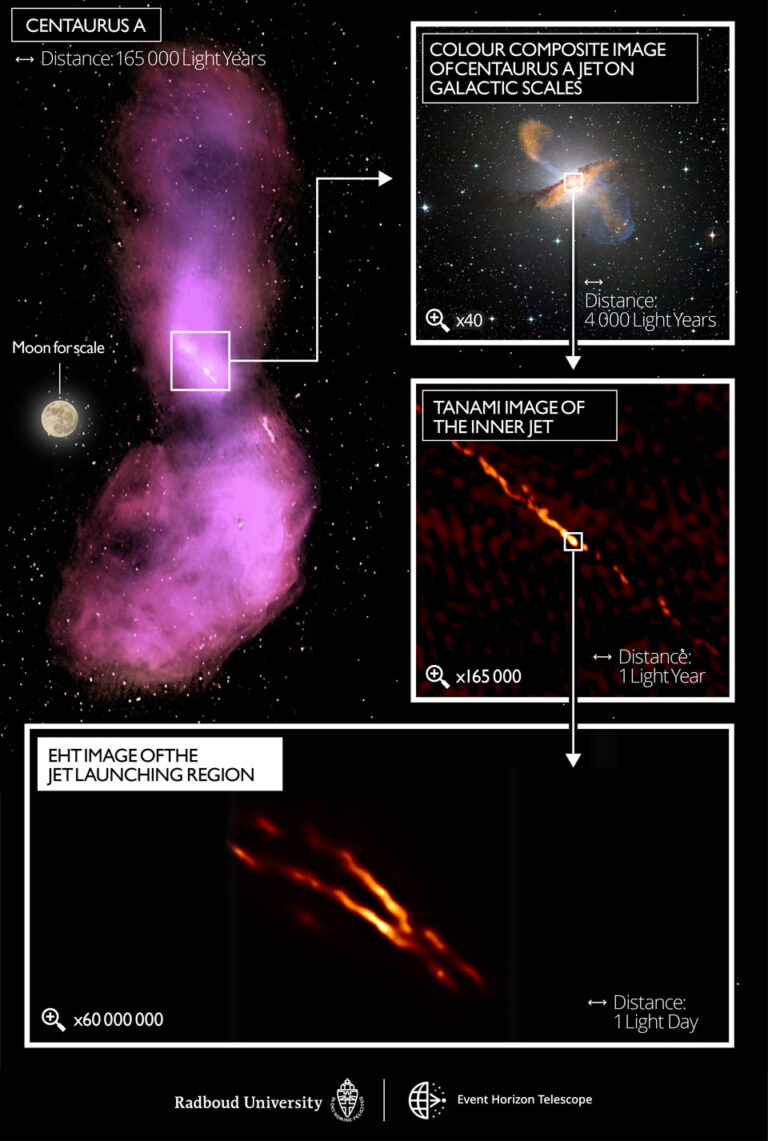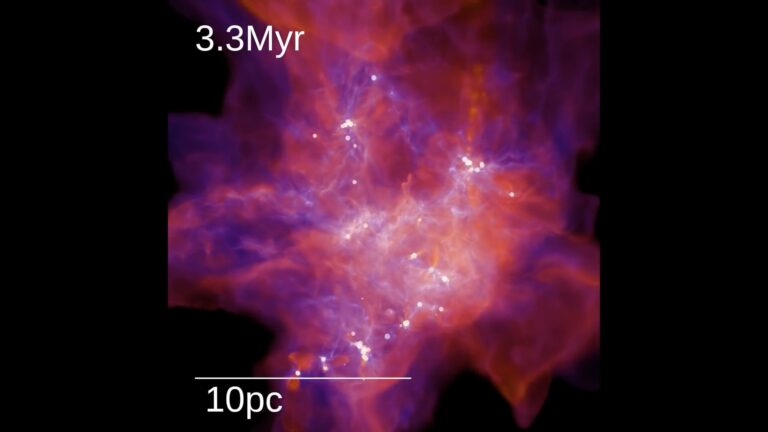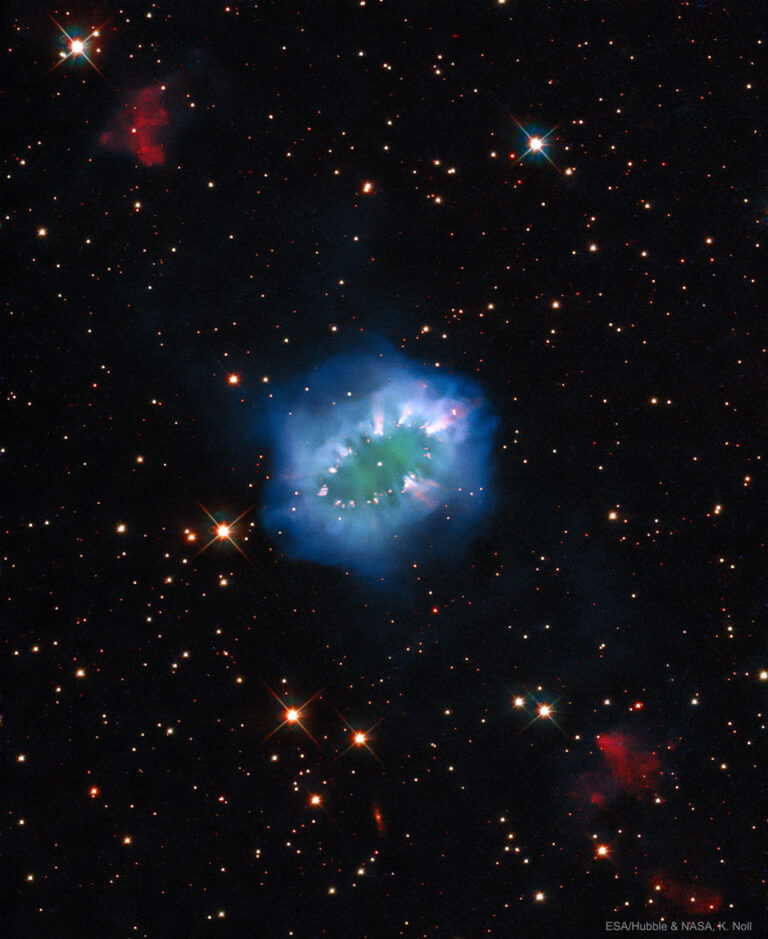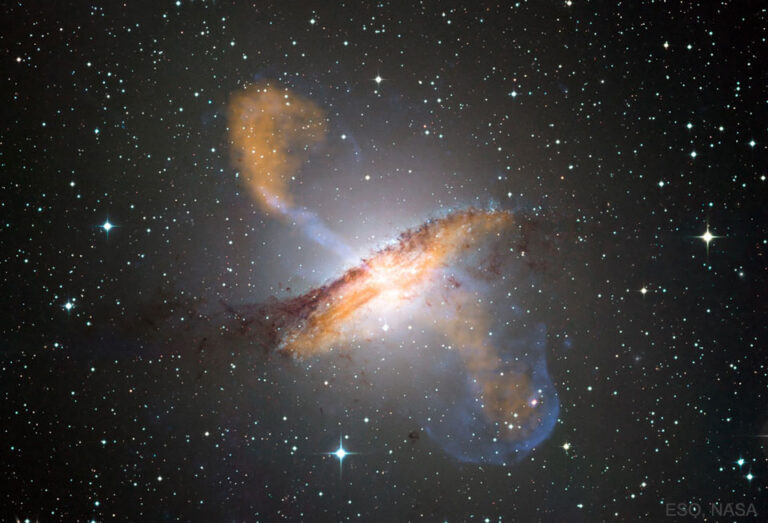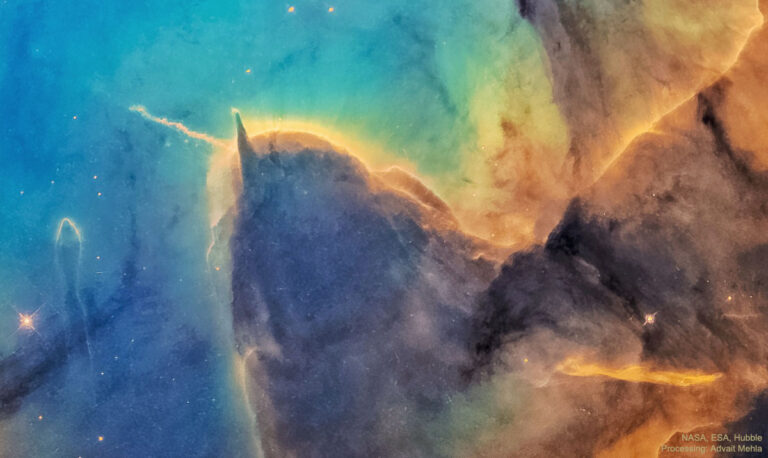HH 30: 有形成中行星的恒星系统
A dark field has a single, colorful, blurry structure in its center. Red-colored jets extend out from the center toward the top and bottom of the frame. A dark disk covers the center. Blue outflows appear on both sides of the horizontal disk. To the lower left, a larger blue outflow extends. Please see the explanation for more detailed information.
暗场中央有一个单一的、色彩鲜艳的模糊结构。红色喷流从中心向画面的顶部和底部延伸。一个暗盘覆盖了中心。水平盘的两侧出现蓝色外流。在左下方,有一个更大的蓝色外流延伸。有关更多详细的信息,请参阅说明。




